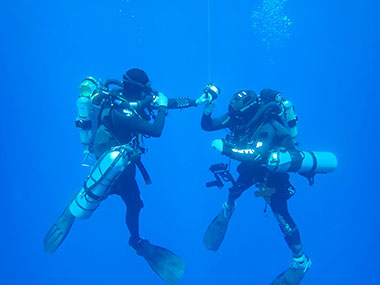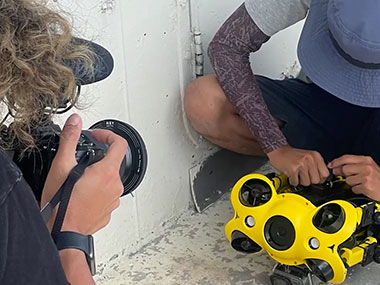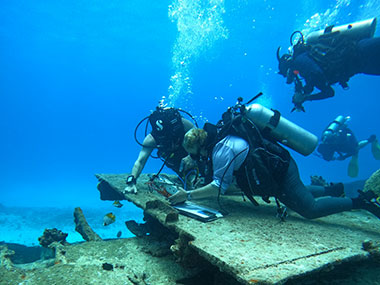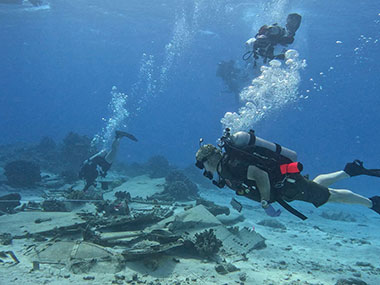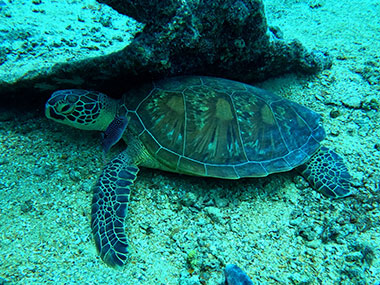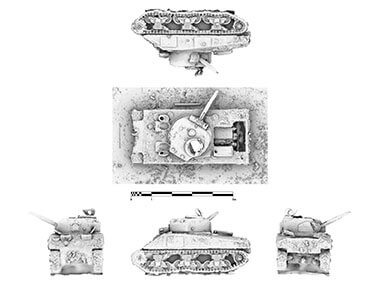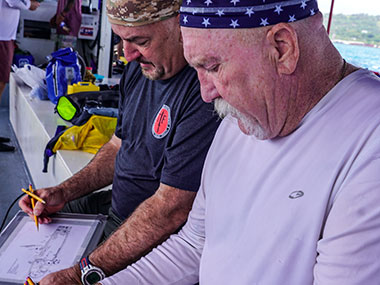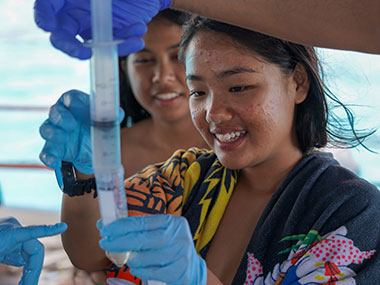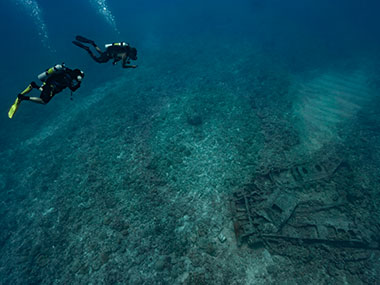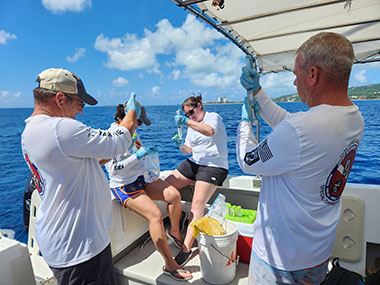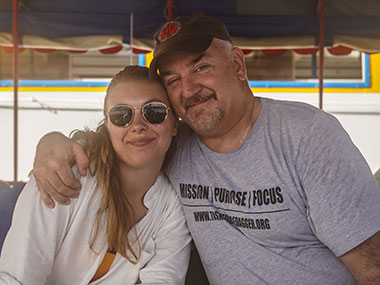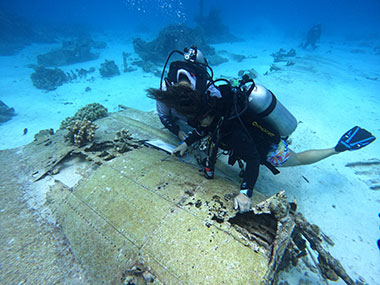Exploring Deepwater World War II Battlefields in the Pacific Using Emerging Technologies
April 22 - May 14, 2023
N/A
Saipan, Northern Mariana Islands
Use emerging technologies to locate, explore, and characterize the remains of the World War II Battle for Saipan’s underwater battlefield
Technical divers, remotely operated vehicle, photogrammetry, eDNA sampling, conservation surveys
Project Summary
From April 22 to May 14, 2023, researchers searched for, investigated, and documented remains of the World War II (WWII) Battle for Saipan’s underwater battlefield, including aircraft and amphibious vehicles.
The 1944 U.S. victory over Japan in the Battle for Saipan in the Northern Mariana Islands was the largest U.S. amphibious invasion in the Pacific theater at the time and a decisive moment for WWII in the Pacific. Today, the landing beaches for the invasion are part of a U.S. National Historic Landmark District (Landing Beaches, Aslito/Isely Field and Marpi Point, Saipan Island).
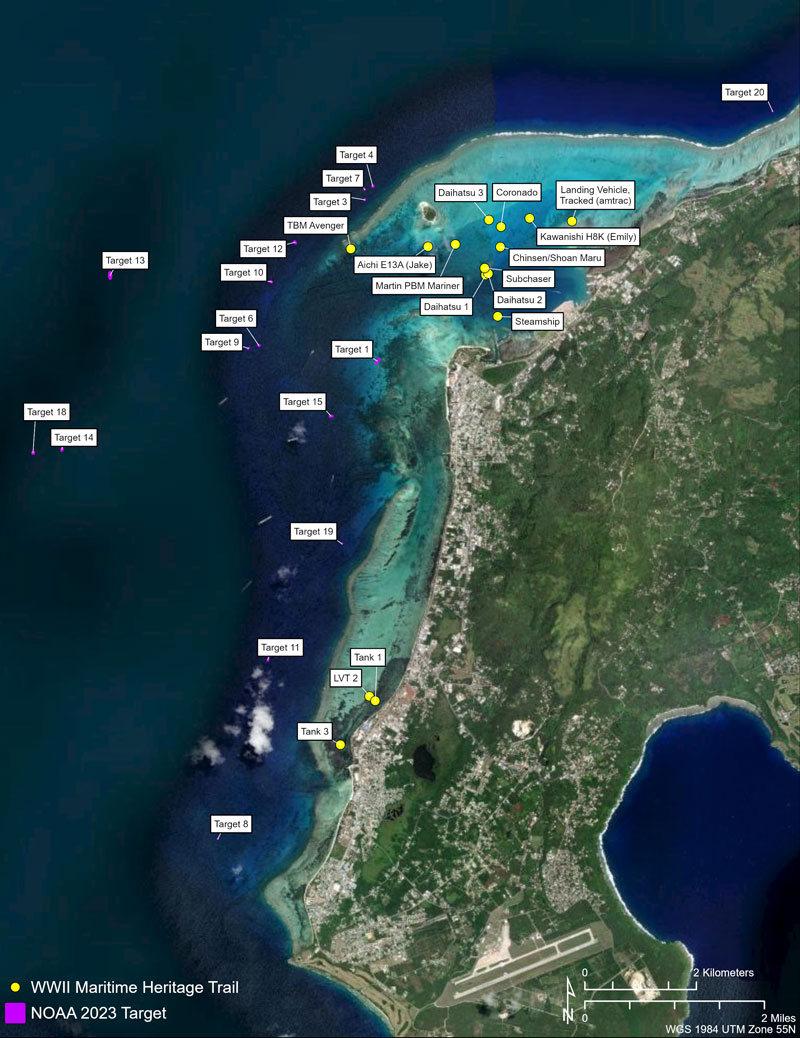
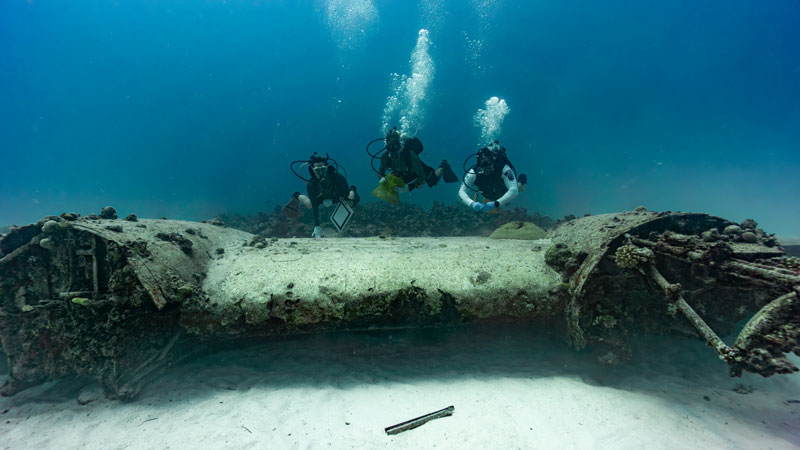
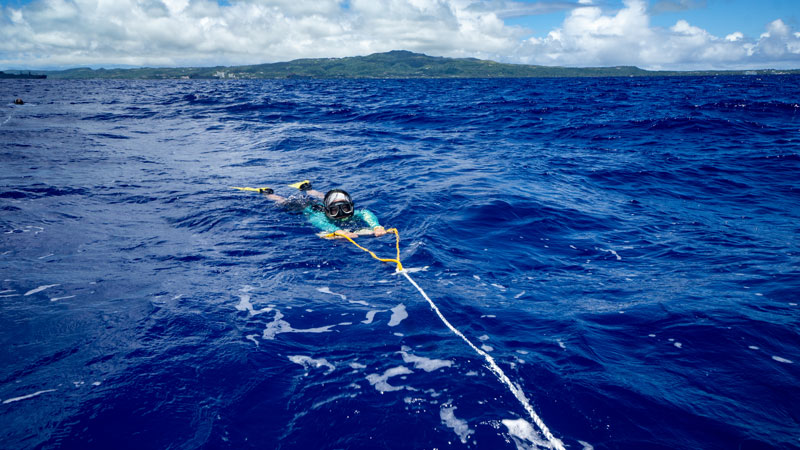
This research team sought to enhance our knowledge about this historic battlefield and the preservation status of the tangible reminders of an important moment in U.S. history.
To find previously unknown sites (e.g., shipwrecks, tanks, amphibious vehicles, aircraft) on this largely unexplored battlefield, the team tested a new approach. They used artificial intelligence to find potential sites in lidar data. With targets identified, they deployed technical divers to ground truth the data.
The divers investigated 14 lidar-detected targets outside of Saipan Lagoon at depths ranging from roughly 10 to 50 meters (33-164 feet). While lidar proved effective for detecting sites in shallower water, it was less effective at these greater depths, where most of the targets turned out to be natural features. Nevertheless, the team did discover a number of sites, including a large amount of iron anchor chain and an amphibious vehicle (a Landing Vehicle Tracked, or LVT).
Additional operations in this deep water included documenting, for the first time, a U.S. PBM Coronado seaplane and a multivehicle WWII LVT dump site, known only to a few local divers, and a tow board survey. During this survey, they documented a number of artifacts associated with WWII that were not evident in the lidar data, including iron plating, a possible LVT, ordnance, a potential mooring, and other battle-related items.
The team also visited 15 known sites in the shallower water of the lagoon (up to 12 meters [40 feet] in depth) that are on the Battle for Saipan Maritime Heritage Trail. Here, they conducted conservation surveys and photogrammetric surveys to create 3D models of the sites.
At six sites, inside and outside of the lagoon, they collected environmental DNA (eDNA) biofilm, water, and sediment samples to learn about the marine life associated with the sites.
Joining the project team were 8 U.S. military veteran divers from Saipan, who participated in this project as part of a citizen science rehabilitative therapy training program, as well as 12 veterans and family members from Task Force Dagger Special Operations Foundation. These individuals assisted with the investigation of potential targets, site documentation, and sample collection. Notably, veteran rebreather divers did most of the deepwater investigation of potential targets.
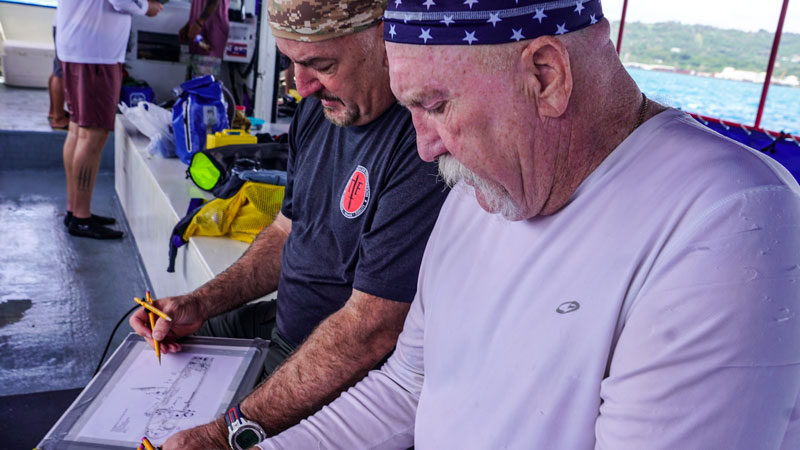
Other participants included Mariana Islands Nature Alliance rangers, recent high school graduates in training to become community conservation messengers. The rangers assisted with the processing of eDNA samples aboard the research vessel.
While the fieldwork is complete, more work remains to be done. It will take several months to build photogrammetric models from the diver- and ROV-collected imagery, process the eDNA data, and analyze the corrosion measurements collected during the conservation surveys. In addition, work will continue to refine the use of lidar for the detection of underwater cultural heritage sites.
All the data collected and processed during this project will provide a current snapshot of the condition of each site that can be used to track its health over time. They will also provide important insights into the factors that affect site integrity. eDNA data will shed light on site-specific species diversity, abundance, and sustainability. Together, these data will help marine resource managers understand the socioeconomic value of these important archaeological and biological resources (e.g., for historical, tourism, and fisheries purposes) to inform their protection and increase public appreciation and understanding of WWII maritime heritage.
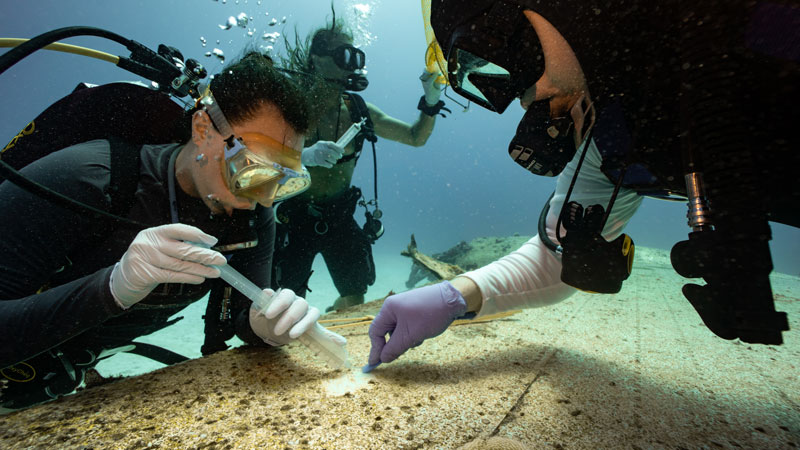
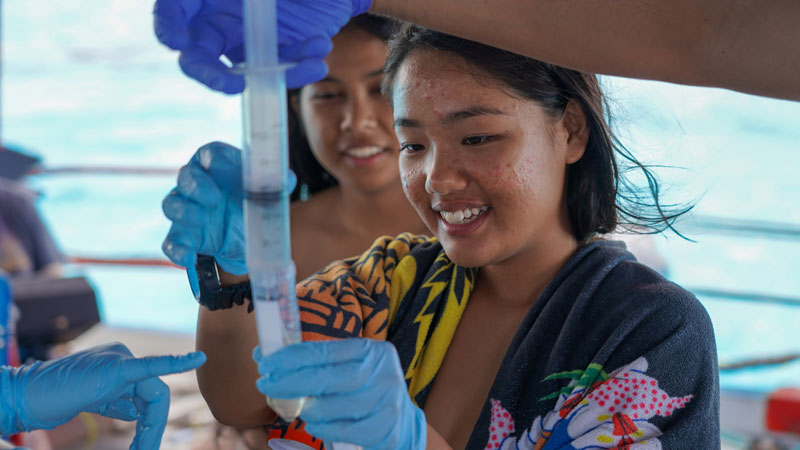
Project Features
Images and Videos
Exploration Team

Jennifer McKinnon
Principal Investigator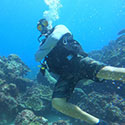
David Benavente
Co-Principal Investigator
Toni Carrell
Co-Principal InvestigatorEducation Content
Education theme pages provide the best of NOAA Ocean Exploration's related web content to support educators in the classroom. Each theme page includes background information, lessons, multimedia, career information, and links to related projects and expeditions.
Related Links
Exploration Tools:
- Technical Diving
- Remotely Operated Vehicles
- Photogrammetry
- Environmental DNA (eDNA)
- Conservation Surveys
Projects/Expeditions:
- Peleliu’s Forgotten World War II Battlefield
- Guam: A Biogeographic and Maritime Cultural Landscape Exploration of a World War II Amphibious Battlefield
Other:
Partners
Media Contacts
Emily Crum
Communication Specialist
NOAA Ocean Exploration
ocean-explore-comms@noaa.gov
Jennifer McKinnon
Principal Investigator
Ships of Discovery/East Carolina University
mckinnonje@ecu.edu
Funding for this project was provided by NOAA Ocean Exploration via its Ocean Exploration Fiscal Year 2022 Funding Opportunity.
Published June 14, 2023
Updated November 9, 2023
